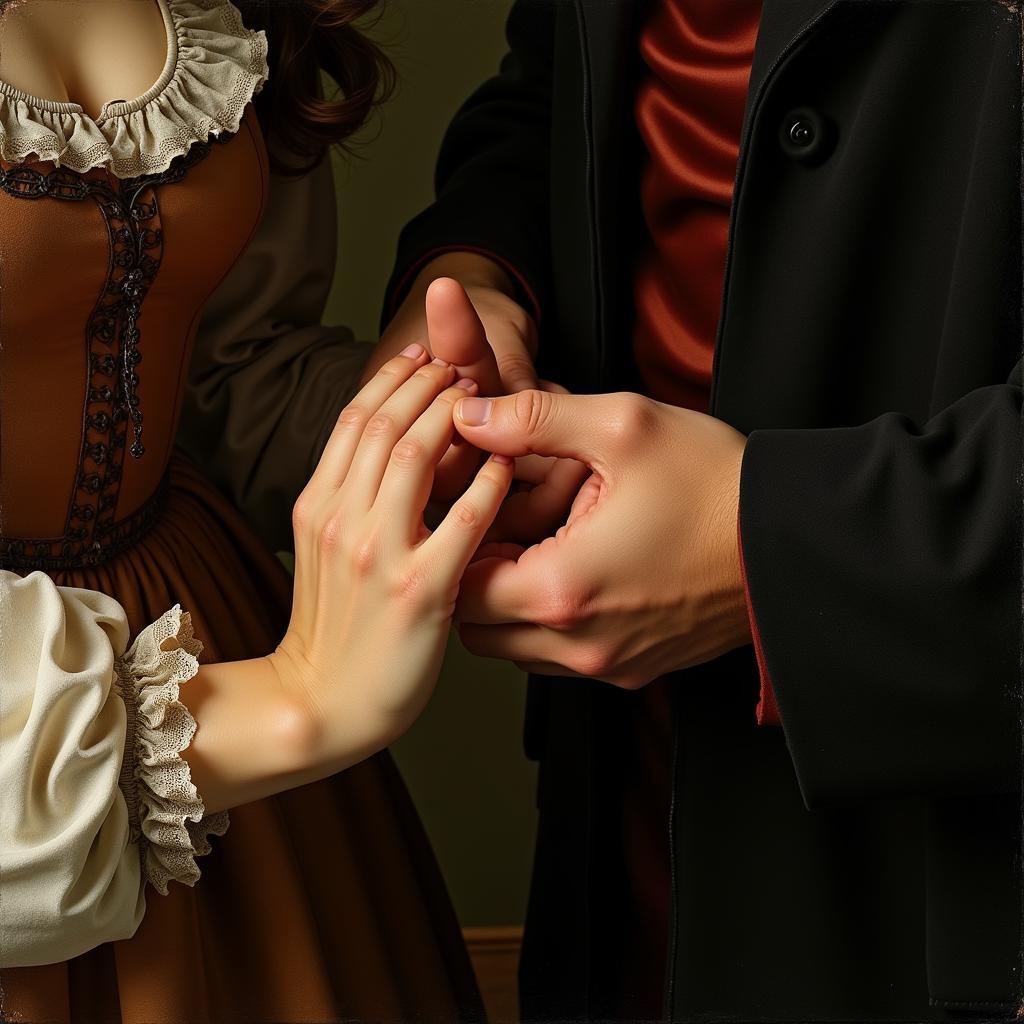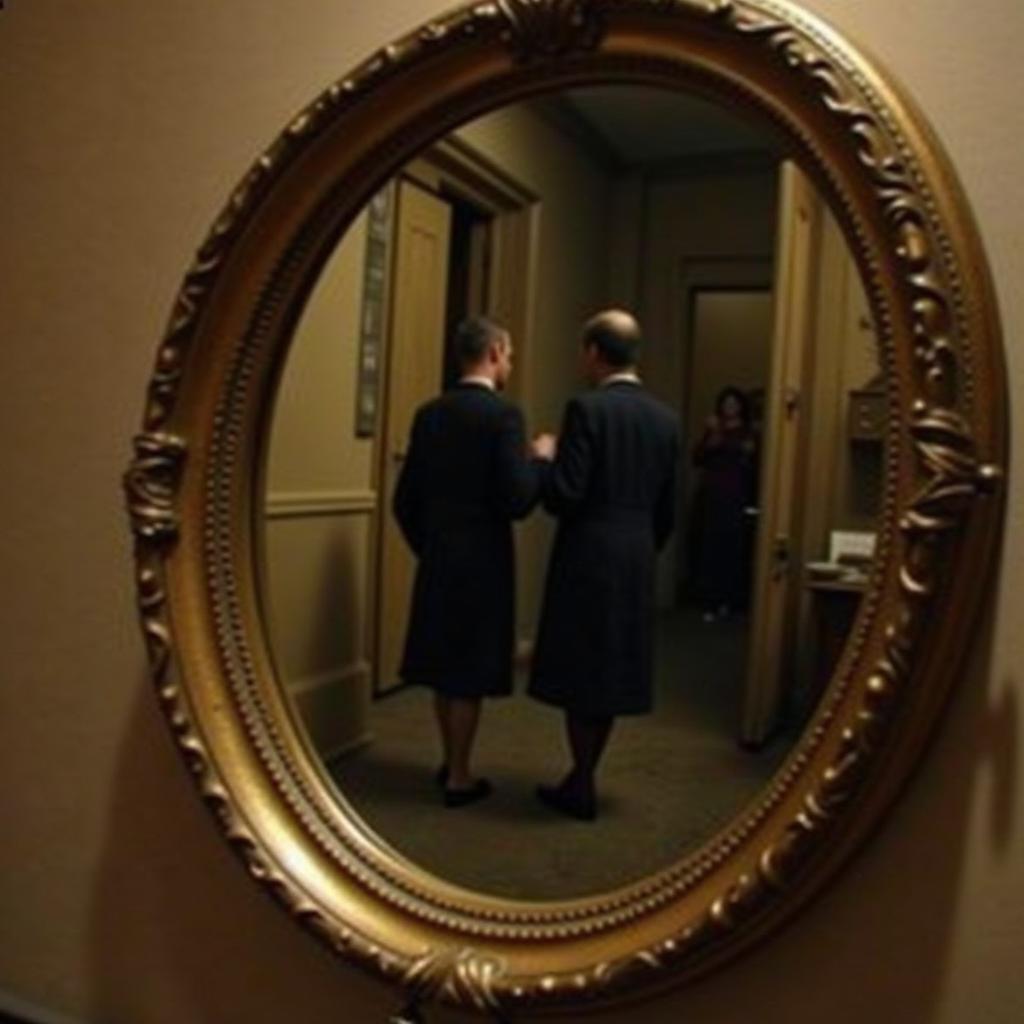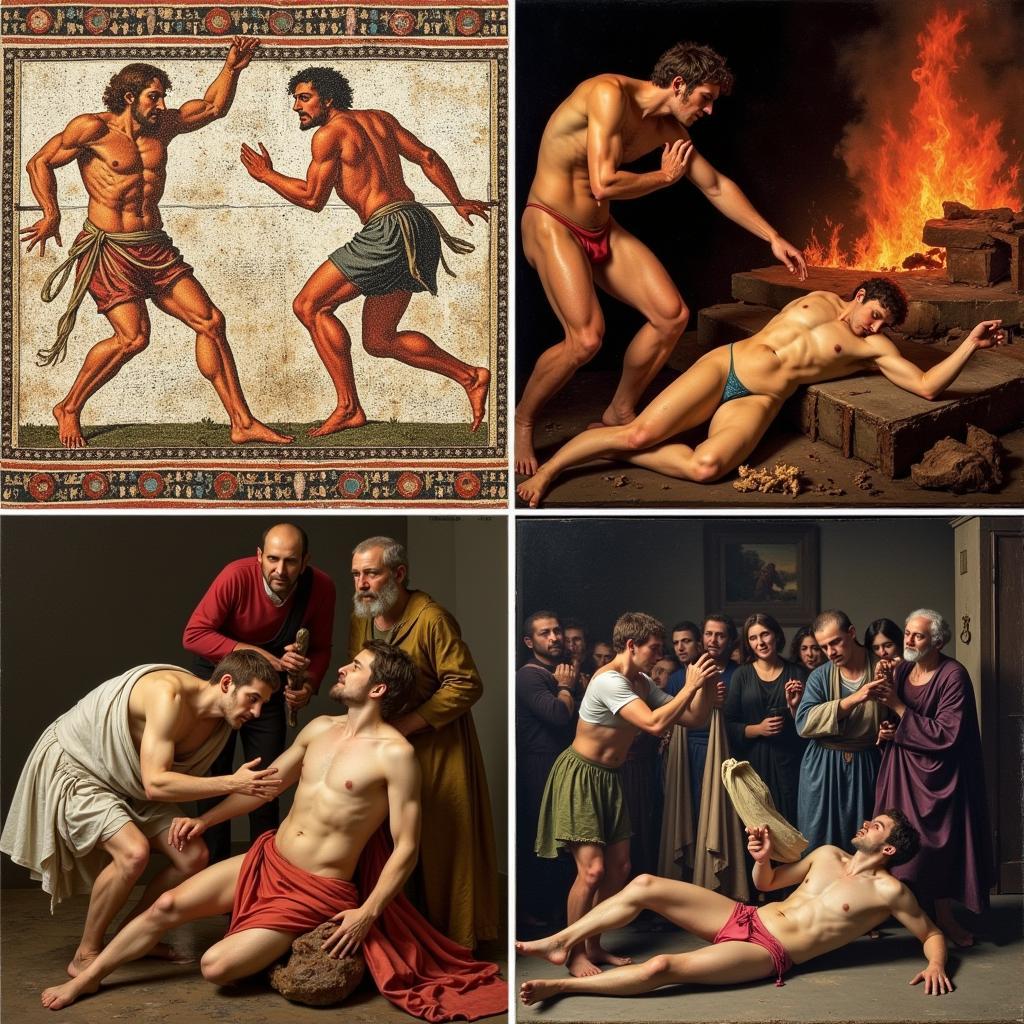Unlocking the Secrets of the Arnolfini Portrait: An AP Art History Deep Dive
The Arnolfini Portrait, a masterpiece painted by Jan van Eyck in 1434, has captivated art enthusiasts for centuries. This seemingly simple double portrait, often studied in AP Art History courses, holds a wealth of symbolism and intrigue that continues to fascinate and puzzle viewers today. Let’s delve into the rich history, hidden details, and enduring legacy of this enigmatic artwork.
A Window into the Past: Understanding the Arnolfini Portrait’s Context
To fully appreciate the Arnolfini Portrait’s significance, we must first travel back to 15th-century Bruges, a thriving center of trade and commerce in the Flemish region. Commissioned by the wealthy merchant, Giovanni di Nicolao Arnolfini, and believed to depict him alongside his wife, Giovanna Cenami, the painting offers a glimpse into the lives of the affluent merchant class during the Northern Renaissance.
 The Arnolfini Portrait Details
The Arnolfini Portrait Details
The portrait’s meticulous detail and realistic depiction of objects, a hallmark of the Northern Renaissance style, provide valuable insights into the period’s material culture. From the intricate patterns on the clothing to the meticulously rendered furniture, each element speaks volumes about the Arnolfinis’ wealth and social standing.
Symbolism Unveiled: Deciphering the Portrait’s Hidden Meanings
Beyond its surface beauty, the Arnolfini Portrait is a treasure trove of symbolism. Every object, gesture, and detail is imbued with multiple layers of meaning, reflecting the religious beliefs, social customs, and cultural values of the time.
A Contractual Union?
One of the most debated aspects of the painting is its purpose. Some scholars interpret it as a marriage contract, citing the presence of witnesses reflected in the convex mirror on the back wall. The inscription above the mirror, “Jan van Eyck was here 1434,” further strengthens this theory, suggesting the artist himself acted as a witness to the event.
 Arnolfini Portrait Mirror Reflection
Arnolfini Portrait Mirror Reflection
However, others argue that the portrait commemorates an already existing marriage, pointing to the woman’s attire, which signifies her status as a married woman rather than a bride. The single lit candle in the chandelier, often associated with the presence of God, adds another layer of complexity, hinting at a sacred union blessed by the divine.
A Tapestry of Symbolism
Further enriching the portrait’s narrative are the numerous symbolic objects scattered throughout the room. The discarded shoes, the prayer beads, the fruit on the windowsill – each element contributes to the painting’s complex web of meaning, inviting viewers to unravel its secrets.
For instance, the small dog in the foreground, often associated with fidelity, might symbolize marital loyalty. Similarly, the oranges placed prominently on the chest, a luxury item at the time, could represent wealth, fertility, or even the Garden of Eden.
Enduring Legacy: The Arnolfini Portrait’s Influence and Relevance
The Arnolfini Portrait’s influence extends far beyond its time, inspiring countless artists and shaping the course of Western art. Its innovative use of perspective, meticulous attention to detail, and masterful handling of light and shadow cemented Jan van Eyck’s reputation as a true pioneer of Northern Renaissance painting.
More than just a historical artifact, the Arnolfini Portrait continues to resonate with audiences today. Its enigmatic nature, open to multiple interpretations, encourages viewers to engage with the artwork on a personal level, fostering dialogue and sparking curiosity across generations.
Expert Insight:
“The Arnolfini Portrait is a testament to the power of art to transcend time,” remarks Dr. Eleanor Ainsworth, art historian specializing in the Northern Renaissance. “Its enduring appeal lies not only in its technical brilliance but also in its ability to spark our imaginations and invite us to unravel its mysteries.”
Conclusion: A Timeless Masterpiece for the Ages
The Arnolfini Portrait, a cornerstone of AP Art History, remains an enigma, its true meaning elusive yet endlessly fascinating. By exploring its historical context, deciphering its symbolic language, and appreciating its enduring legacy, we can begin to grasp the complexity and beauty of this timeless masterpiece.
For assistance with your art historical inquiries, please contact us at:
Phone Number: 02462573573
Email: [email protected]
Address: Savico Megamall, 7-9 Đ. Nguyễn Văn Linh, Gia Thụy, Long Biên, Hà Nội 10000, Việt Nam
Our dedicated customer service team is available 24/7 to assist you.





